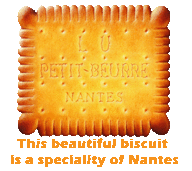|
|
|
History of IGCA Brief history of the IGC
The International Gemmological Conference (IGC) owes much of its origin to BIBOA (Bureau International pour laBijouterie,Orfèvrene, Argenterie), the International Jewellery and Gemstone Federation, the first Congress of which in 1926 recommended and defined use of the term cultured pearl. Experts from various European gem testing laboratories were invited to attend a series of expert meetings that aimed to formulate the policies of BIBOA. In 1936, at the fifth conference of experts, collaboration among laboratories was acclaimed by traders and they encouraged Laboratory Directors to meet each other at a technical conference from which all commercial delegates would be excluded. Technical meetings were held annually, and in 1951 a Technical Conference was held in Idar Oberstein to prepare for the next London Congress in 1952. Those attending the 1951 conference included Mr B.W. Anderson, Mr G. Göbel, Dr E. Gübelin, Mr F. Wolf, Mr A. Bonebakker, Mr H. Tillander, Mr A. Strondahl, and Mr O. Dragstead. It has been suggested that the future framework of the IGC was established at this meeting in Idar Oberstein. The London Congress saw the restructuring of BIBOA in which Gemmological Associations were replaced by National Federal Committees, and BIBOA evolved into BIBOAH – the forerunner of CIBJO, now known as The World Jewellery Confederation. A Technical Conference met at Lugano from 23rd to 25th October 1952 at the initiative of Prof. K. Schlossmacher and Dr. E. Gübelin. Also present at this conference were Messrs B.W. Anderson, A. Bonebakker, O. Dragstead, G. Göbel, K. Siess and H. Tillander. At this historic meeting Dr E. Gübelin proposed creation of a “Committee of an International Gemmological Association” that would consist of one member per country; this member being the Director of a Gem Testing Laboratory, or a gemmologist of the calibre who could attend that meeting. This was agreed to, and this meeting was later considered to be the inaugural meeting of the IGC. The first meeting of the IGC in Lugano was followed by subsequent meetings in Amsterdam, The Netherlands (1953), Copenhagen, Denmark (1954), London, UK (1955), Munich, Germany (1956), Oslo, Norway (1957), Paris, France (1958), Milano, Italy (1960), Helsinki, Finland (1962), Vienna, Austria (1964); Barcelona, Spain (1966); Stockholm, Sweden (1968); Brussels, Belgium (1970); Vitznau, Switzerland (1972); Washington D. C., USA (1975), The Hague, The Nether- lands (1977), Idar Oberstein, Germany (1979), Kashiko-Jima, Japan (1981), Beruwela, Sri Lanka (1983); Sydney, Aus- tralia (1985); Rio de Janeiro, Brazil (1987), Tremezzo, Italy (1989); Stellenboch (1991), Paris, France (1993); Bangkok,Thailand (1995); Idar Oberstein, Germany (1997); Goa, India (1999); Madrid, Spain (2001), Wuhan, China (2004); Mos- cow, Russia (2007); Arusha, Tanzania (2009), Interlaken, Switzerland (2011); Hanoi, Vietnam, (2013); Vilnius, Lithuania (2015); Windhoek, Namibia (2017). Over the history of the IGC, that now in its fourth decade, it can therefore be seen that the International Gemmological Conference is the longest surviving gemmological conference to remain largely in its original format. Over its history, invited participants representing 40 countries or areas – including Australia, Austria, Bahrein, Belgium, Brazil, Canada, China, Czech Republic, Denmark, Dubai (UAE), England, Finland, France, Greece, Germany, Greenland, Hong-Kong, Israel, India, Italy, Japan, Kenya, Korea, Liechtenstein, Lithuania, Namibia, the Netherlands, Norway, Russia, Singapore, South Africa, Spain, Sri Lanka, Switzerland, Sweden, Tanzania, Thailand, U.S.A., Vietnam and Zimbabwe – have been invited to participate in IGC meetings. During the 20th IGC, which was held in Sydney, Australia, the members present elected nine members to Honorary Members status. The first Honorary Members of the IGC were Oliver Chalmers (Australia), Prof. A. Chikayama (Japan), and Mr R. Crowningshield (U.S.A), Mr. O. Dragsted (Sweden), Prof. E. Gübelin (Switzerland), Mr. R. T. Liddicoat (U.S.A), Mr. M. Masso (Spain), Dr. F. H. Pough (U.S. A) and Dr. J. M. Saul (Kenya). In Italy, the IGC logo was designed by Roberto Sambonet, made in gold by Roberto Cusi, and offered to the conference delegates during the Tremezzo 1989 edition. In Italy, in 1989, the following rules were agreed for future meetings of the IGC: 1. The prime objective was to be the exchange of gemmological experiences.
6. The Conference must keep foremost in mind the prime objectives and avoid dilution/confusion of this objective which, if not maintained, could result in a blank organization without true status or credibility.
These rules, combined with the original concepts, have been kept as the basis for all conferences since. Any invitation is specific to the person invited and is not transferable. |


